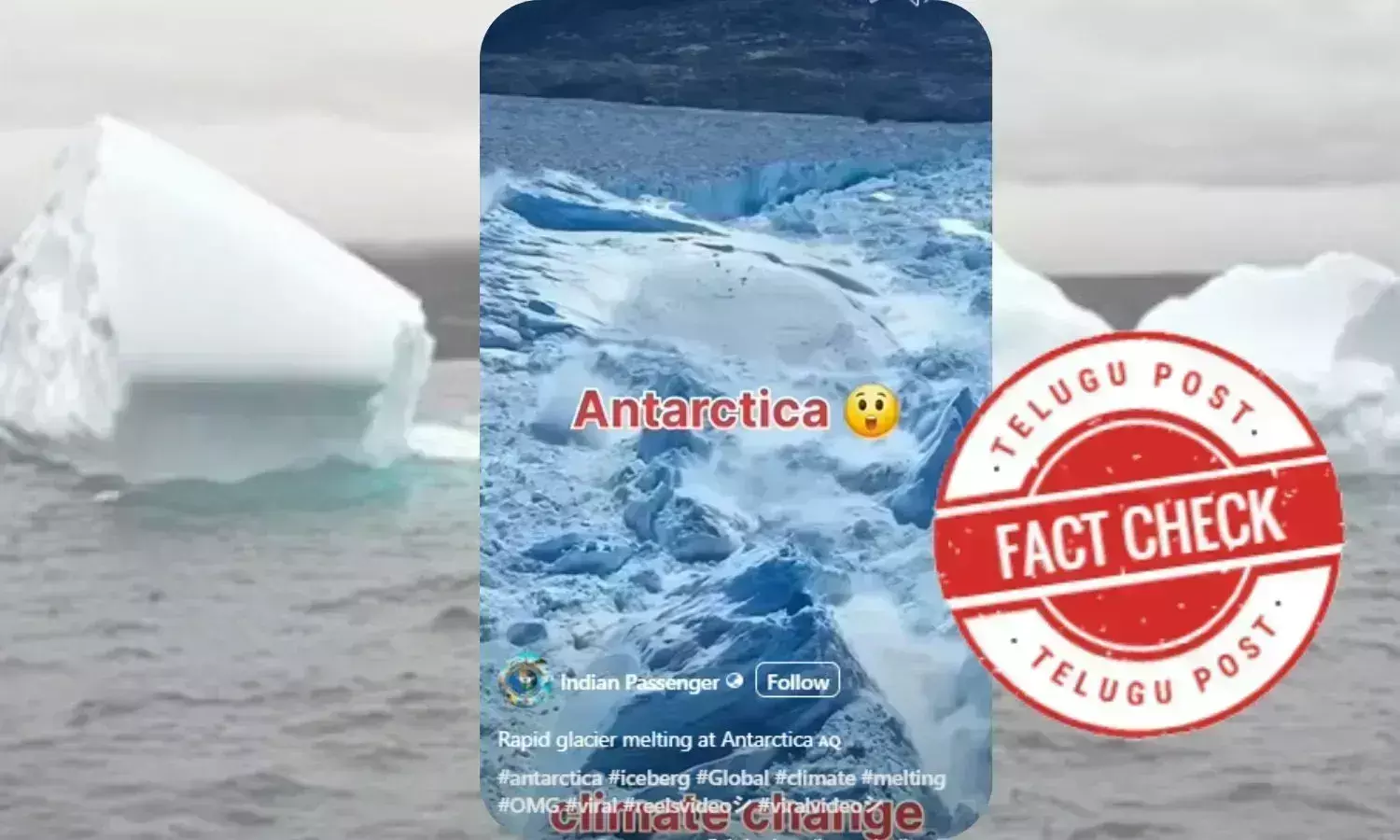Fact Check: Ice calving in Antarctic is not due to climate change, several other factors linked to it
A viral post claims glaciers in Antarctica are melting rapidly. However, natural calving cycles and other factors contribute to ice loss. Climate change contributes, but other factors like ocean currents and wind patterns also play a role.

Claim :
A viral post claims that glaciers in Antarctica are melting rapidly due to climate changeFact :
While Antarctica is losing ice, glacier calving is a natural process occurring over decades
Recently, an iceberg the size of Chicago broke off from the second largest George VI Ice Shelf along the Antarctic coastline. After the calving, the massive iceberg revealed a previously hidden 510 square kilometres mile area of seafloor.
The researchers from the Schmidt Ocean Institute in California, U.S., who were working nearby on a research vessel floating in the Bellingshausen Sea, shifted their focus to the mysterious seabed using a remotely operated vehicle.
Contrary to the belief that the creature cannot survive in the cold, dark depths and under the weight of a thick crust of ice, the scientists found the diverse ecosystems which include centuries-old sponges and cup corals to octopuses, snails, worms, sea spiders, icefish and even a rare giant phantom jellyfish.
A post showing the calving of the ice sheet is going viral on Facebook, claiming glaciers are melting rapidly in Antarctica due to climate change. The post has amassed over 10k likes and shared over 290 times.
The viral claim link is here and here’s the screenshot of the viral post.
Fact Check:
During the investigation, the Telugupost fact check team found that the claim made in the viral post about the rapid melting of glaciers is misleading.
Before we verify the claim, we first need to understand why glacier calving happens in Antarctica. The calving happens when chunks of ice break off from the edge of a glacier. This occurs because the forward motion of a glacier makes the terminus unstable. We call these resulting chunks of ice “icebergs.”
The icebergs could be as huge as a small US state or European country. The calving is a repetitive process producing large icebergs every few decades. Interestingly, these icebergs survive decades or more as long as they remain in the cold. However, they melt and break apart further after getting trapped in north-drifting currents.
Sample this ice calving event -
According to the researchers, the calving cycles of most ice shelves are quite long. For example, Ninnis Glacier has experienced three calving events in the past 60 years (1980-1982, 1998, and 2018).
Using the ARGON, Landsat, and ERS-2 images and combining them with field measurements, the climate scientists have concluded that the time span was over 23 years for the 1st calving cycle and the average time span was ∼18.5 years for each of the last two cycles.
Most of the rapidly retreating ice shelves in Antarctica are located on the Antarctic Peninsula and the peninsula juts north towards South America into warmer waters. According to researchers, the peninsula has warmed 3 degrees Celsius since 1950
Between 1992 and 2017, Antarctica lost more than three trillion tons of ice, most of which came from the West Antarctica Ice Sheet. Some of the most dramatic impacts of warming are collapsing ice shelves in West Antarctica, which are caused by warming. Even though scientists attributed rapid ice shelf collapse to warmer air and water temperatures, high temperatures alone do not fully explain rapid ice shelf collapse.
What triggers a collapse of an ice shelf?
Recent research suggests that waning sea ice surrounding the Antarctic Peninsula and the Arctic ice shelves in Canada might also have contributed to the recent collapses. Sea ice provides a layer of protection between an ice shelf and the surrounding ocean, muting the power of large waves and storms. As sea ice decreases, more waves buffet the ice shelves. The largest waves can buckle and bend an ice shelf, increasing instability and possibly contributing to a collapse.
This process was evident on both Larsen A and B, and a few times on the Wilkins Ice Shelf. There have also been instances where icebergs, drifting on the ocean, have accumulated enough melt on their surface to undergo a disintegration very similar to the Rhode Island-sized Larsen B event of 2002.
The disintegration, which was caught on camera by NASA’s Moderate Resolution Imaging Spectroradiometer (MODIS) imaging instruments on board its Terra and Aqua satellites, was dramatic: it took just three weeks to crumble a 12,000-year old ice shelf.
It is true the Antarctic ice sheet is losing ice but climate change is not the only reason. Various combinations of factors such as warm ocean water flowing underneath ice shelves, natural iceberg calving and changes in wind patterns are also causing the loss. Hence, the claim is misleading.

